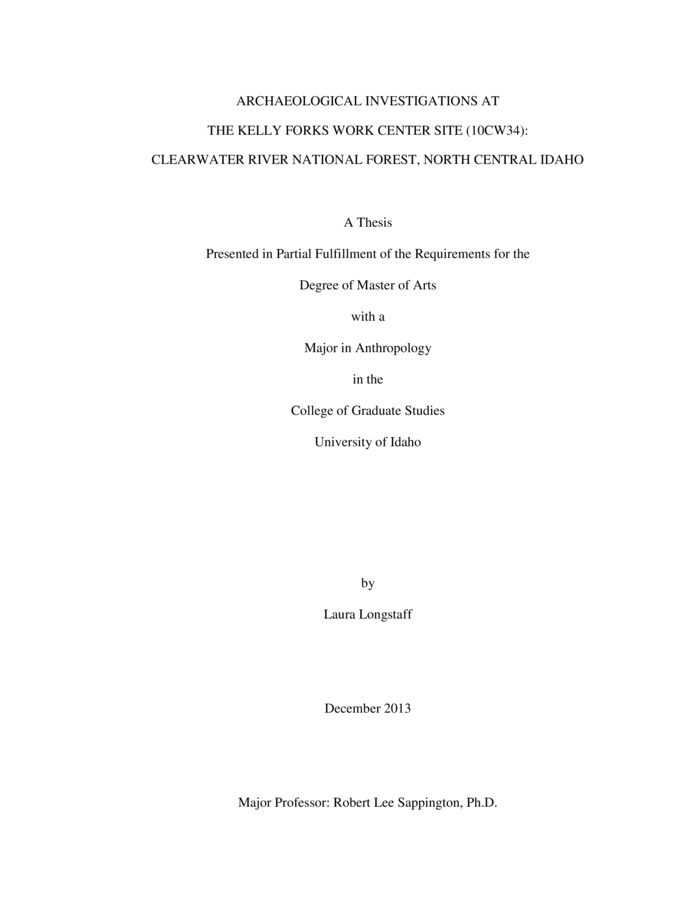Please note: this collection is no longer updated. Visit our Theses and Dissertations Collection in VERSO for all U of I ETD since 2012.
ETD PDF
Archaeological Investigations at the Kelly Forks Work Center Site (10cw34): Clearwater River National Forest, North Central Idaho
Citation
Longstaff, Laura. (2013). Archaeological Investigations at the Kelly Forks Work Center Site (10cw34): Clearwater River National Forest, North Central Idaho. Theses and Dissertations Collection, University of Idaho Library Digital Collections. https://www.lib.uidaho.edu/digital/etd/items/etd_400.html
- Title:
- Archaeological Investigations at the Kelly Forks Work Center Site (10cw34): Clearwater River National Forest, North Central Idaho
- Author:
- Longstaff, Laura
- Date:
- 2013
- Keywords:
- Clearwater National Forest Nez Perce Northern Rocky Mountains North Fork Clearwater River Plateau Archaeology Western Stemmed Tradition Archaeology
- Program:
- Anthropology
- Abstract:
- Kelly Forks Work Center, located on the upper North Fork of the Clearwater River on the Clearwater National Forest, was recorded as an archaeological site (10CW34) in 1969. Surveys and limited testing projects conducted in the 1970s, 1980s, and 1990s demonstrated the presence of significant archaeological deposits at the site and this is supported by the findings of the most recent and comprehensive investigations conducted by the University of Idaho (UI) at 10CW34 between 2010 and 2012. In response to proposed developments by the United States Forest Service (USFS), testing was conducted in four areas of the site, two of which provided intact evidence of repeated use of the site throughout the Holocene. Twenty-six radiocarbon dates, ranging from 13,740 to 280 cal. BP, documented recurring occupations of the site beginning in the early prehistoric period and continuing through the middle and late-prehistoric periods into historic times. Seventy-five obsidian and vitrophyre items from 10CW34 were submitted for x-ray fluorescence analysis and sixty were sourced to locations in Montana, Oregon, and southern Idaho, with Timber Butte comprising the largest percentage. Three soil samples and 123 artifacts recovered at 10CW34 were submitted for protein residue analysis. Twenty-nine tools and each of the soil samples registered forty-four positive reactions with nine mammal antisera, of which rabbit was the most frequent. The abundance and variety of stone tools and debitage recovered at 10CW34, along with the spatial and temporal distribution of these materials, indicates that this location served as an important upland campsite where hunting, fishing, game processing, and tool manufacture and repair were carried out within a wide-ranging network of trade and resource procurement in the southern Plateau, Northwest Plains, and Northern Rockies.
- Description:
- Thesis (M.A., Anthropology)--University of Idaho, December 2013
- Major Professor:
- Robert Sappington
- Type:
- Text
- Format:
- application/pdf
Rights
- Rights:
- In Copyright - Educational Use Permitted. For more information, please contact University of Idaho Library Special Collections and Archives Department at libspec@uidaho.edu.
- Standardized Rights:
- http://rightsstatements.org/vocab/InC-EDU/1.0/

